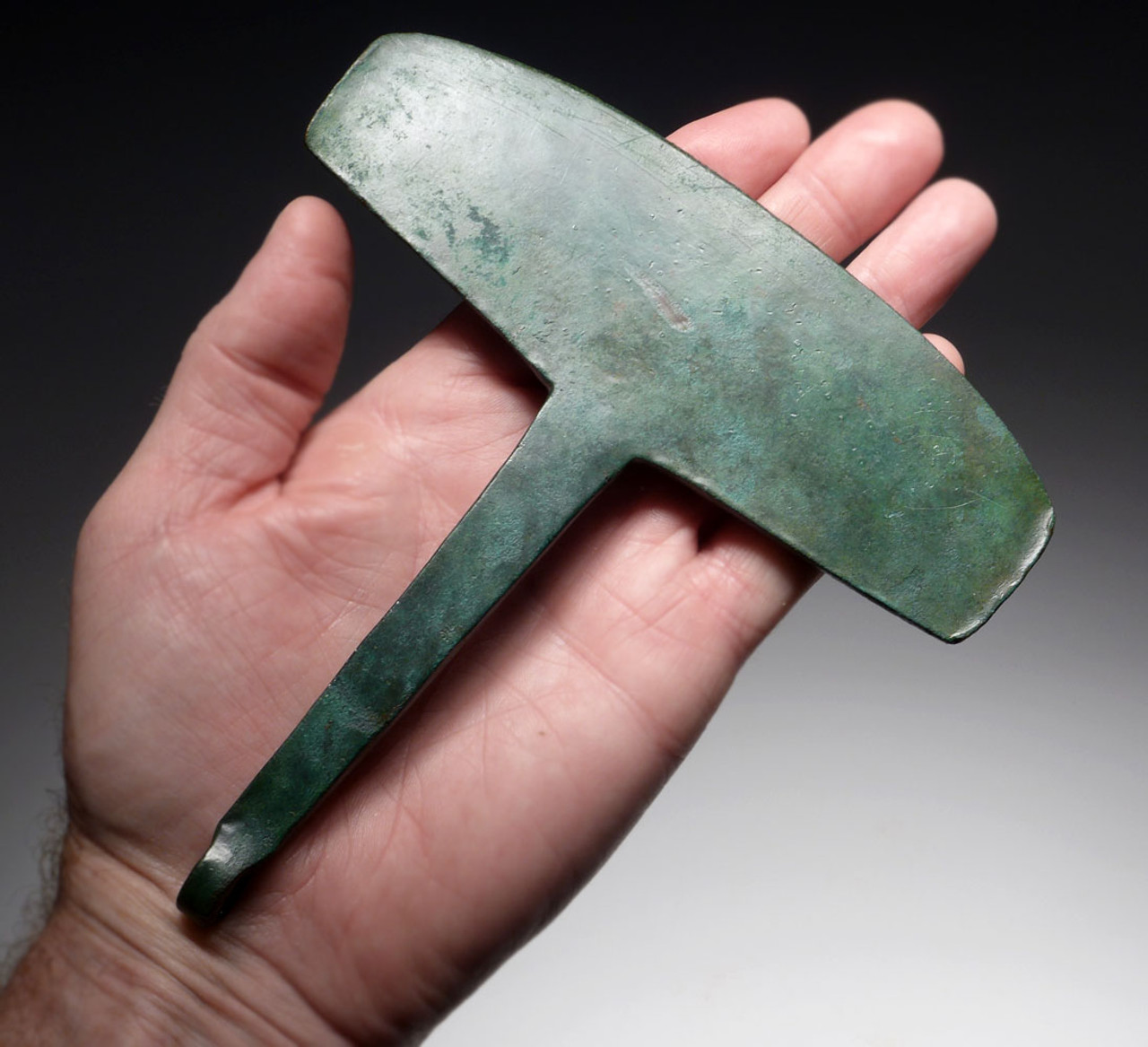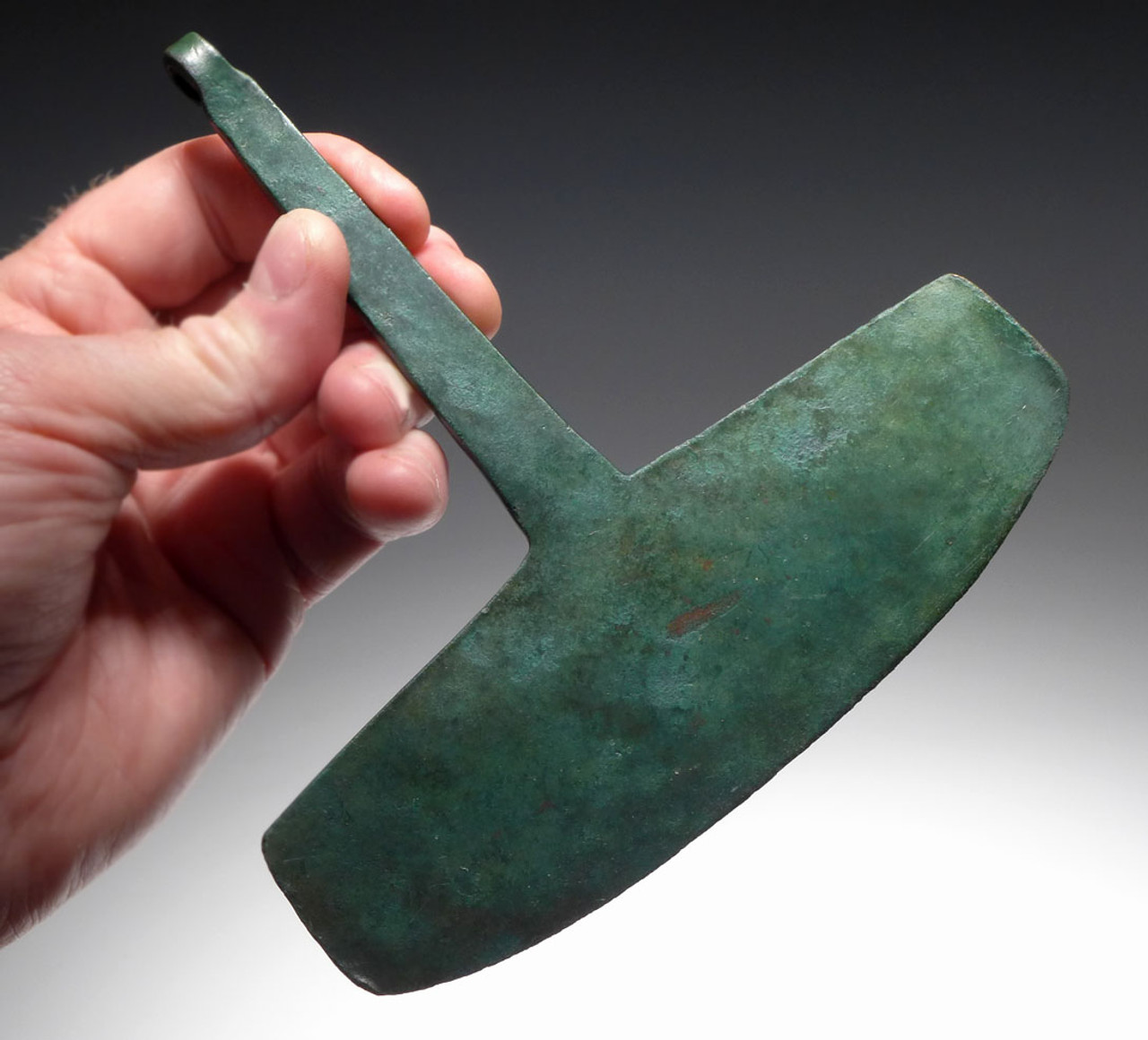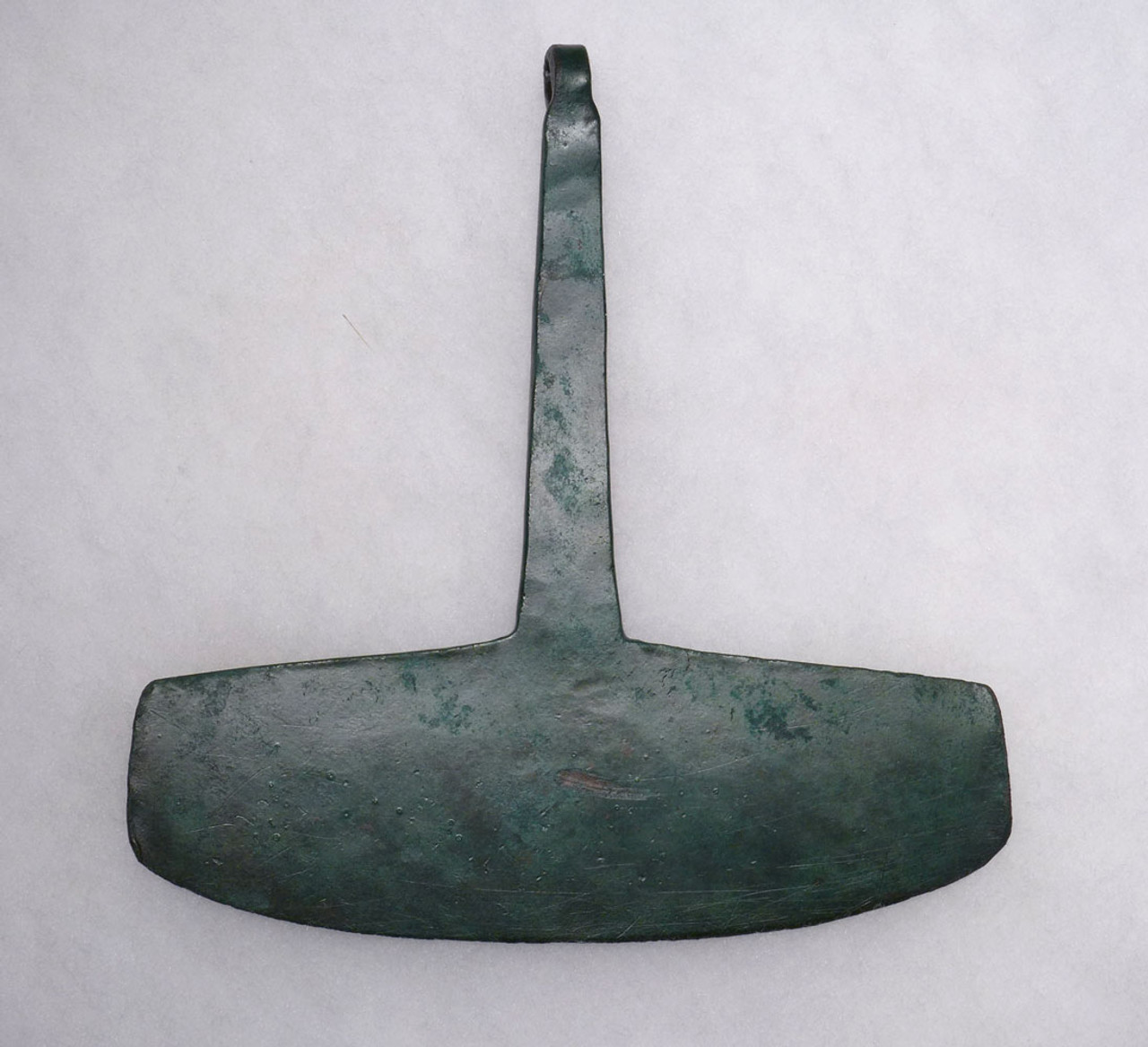Product Description
SEE MORE PRE-COLUMBIAN ARTIFACTS
This remarkable MUSEUM-CLASS T-shaped copper bronze ancient skull trepanning surgical knife comes from the Inca Empire of Pre-Columbian South America. A new study of Pre-Columbian South American trepanned skulls suggests the success rates of ancient surgeons was shockingly high with up to 80% surviving the operation during the Inca era, compared with just 50% during the American Civil War, some 400 years later. Famous for their successful neurosurgical practices of skull trepanning, a knife like this would have been one of the primary instruments used in the practice. It represents the finest ancient Incan trepanning knife we have ever offered, and features a heavy, functional design with a unique suspension loop on the end of the handle. Such a suspension loop on these instruments is rare and perhaps, this was worn as a status symbol and identifier of a prestigious ancient physician of this society. The entire instrument is perfectly preserved with an incredible colorful patina and still sharp edge to the blade.
Knives like these were used in ancient surgery such as skull trepanation where an opening was cut in the skull of a living person as a form of medical treatment. Many ancient human skulls have been noted in science from this region whereby surgical cuts were made with copper knives and in many instances, the patient lived and the wound healed. It is unknown why such practices were performed.
This genuine artifact is not only an exquisite example for any Pre-Columbian collection, but would also make a most memorable gift for any physician or someone in the medical field who appreciates ancient history.
HISTORY
Starting in the beginning of the 13th century A.D. until their final defeat to the Spanish in 1572, the Inca Empire grew to become the largest empire in Pre-Columbian America. Their peak was between the years 1438 and 1533 where they ruled an area as large as the historical empires of Eurasia. Their territory included Peru, southwest Ecuador, western and south central Bolivia, northwest Argentina, the majority of modern Chile, and southwest Colombia, controlled from their center in the city of Cusco in southeastern Peru.
A number of religious cults existed in the empire with regional beliefs but the Incan leadership practiced the worship of their main sun god, INTI. The Incas considered their king, the Sapa Inca, to be the "son of the sun.".
Despite the Incas building one of the largest imperial states in human history, they lacked many basic inventions. They had no wheeled vehicles, did not use animals for transportation or pulling plows, had no knowledge of iron or steel, and used no form of writing. The Inca Empire functioned largely without money or markets, instead using the barter system for the exchange of goods and services. In light of this, they were far from being a primitive society. The Incas built monumental stone architecture that to this day, still defies explanation. They also developed an extensive system of roads and highways reaching all ends of the empire. Their achievements in finely-woven textiles are legendary, and they developed innovations in farming and architecture in the extreme terrain of the Andes where most civilizations would have never dared occupy.
 US DOLLAR
US DOLLAR
 EURO
EURO
 AUSTRALIAN DOLLAR
AUSTRALIAN DOLLAR
 CANADIAN DOLLAR
CANADIAN DOLLAR
 POUND STERLING
POUND STERLING




















